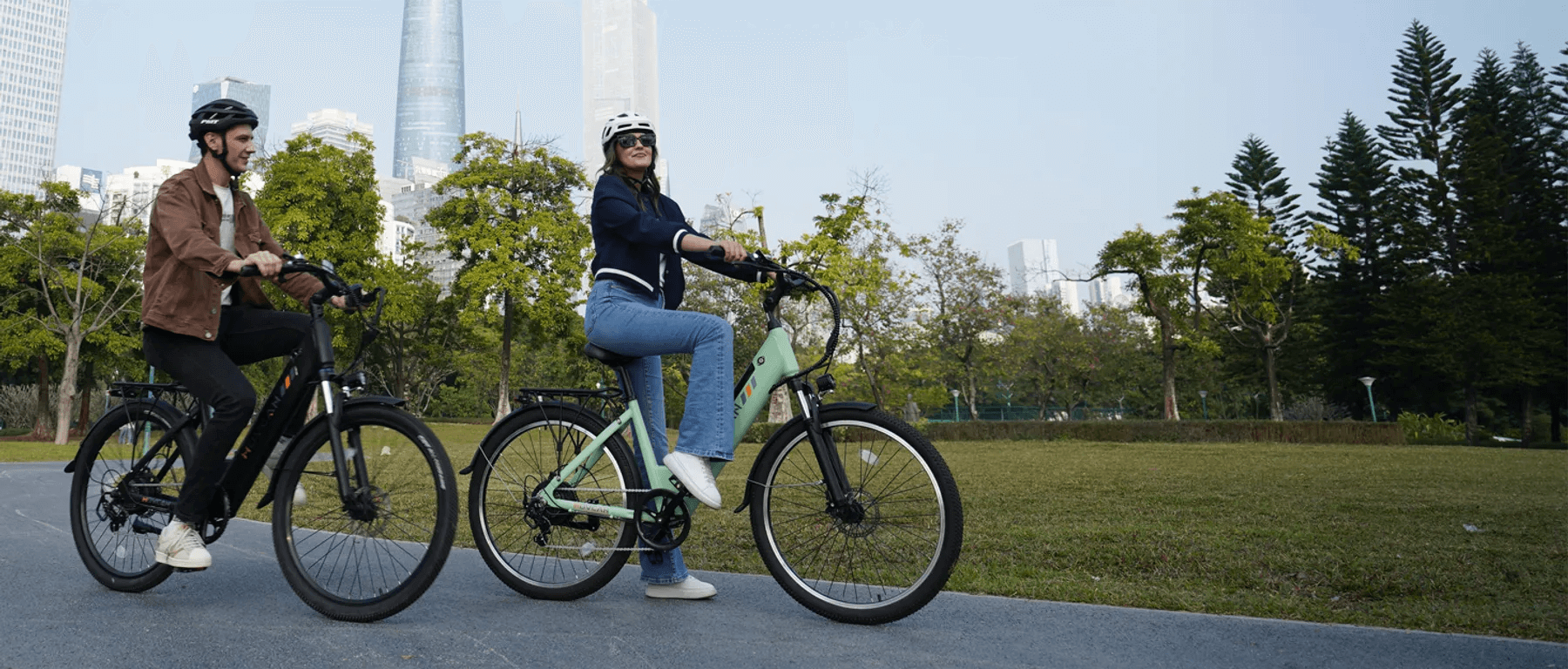Are you experiencing unpredictable shifting, chain skipping, or annoying noises while riding your electric bike? These issues often point to an improperly adjusted derailleur - the crucial component that guides your chain across the cassette gears. Today, we're sharing MoVcan's expert guide to derailleur adjustment, helping you achieve the smooth, precise shifting your premium e-bike deserves.
Why Proper Derailleur Adjustment Matters for E-Bikes
E-bikes place unique demands on drivetrain components. The combination of motor torque and rider power creates forces that can quickly expose even minor misalignments in your shifting system. A properly tuned drivetrain not only provides a better riding experience but also extends the lifespan of expensive components.
Essential Tools for Derailleur Adjustment
Before beginning any adjustments, gather these tools:
- Phillips and flathead screwdrivers
- 5mm Allen key
- Bike stand or way to elevate the rear wheel
- Clean rag
- Bicycle-specific lubricant
- Good lighting
Step-by-Step E-Bike Derailleur Adjustment
1. Preliminary Inspection
Start by checking your derailleur hanger alignment. Even slight bending can cause persistent shifting problems and is often overlooked. Many bike shops offer derailleur hanger alignment services if you suspect damage.
2. Limit Screw Adjustment
Limit screws prevent the derailleur from moving too far inward or outward, protecting your chain from falling off or getting caught in the spokes.
High Limit (H):
- Shift to the smallest cog (highest gear)
- Adjust the H-screw until the derailleur pulley aligns perfectly beneath the smallest cog
- Turn clockwise to move the derailleur outward, counterclockwise to move inward
Low Limit (L):
- Shift to the largest cog (lowest gear)
- Adjust the L-screw until the derailleur pulley aligns directly beneath the largest cog
- Small, quarter-turn adjustments work best
3. Cable Tension Adjustment
Proper cable tension ensures responsive shifting across all gears:
- Shift to the middle of your cassette
- Locate the barrel adjuster on your derailleur or shifter
- If shifting to higher gears (smaller cogs) is sluggish, decrease tension by turning the barrel adjuster clockwise
- If shifting to lower gears (larger cogs) is sluggish, increase tension by turning counterclockwise
- Make small adjustments, test, and repeat
4. B-Screw Adjustment for E-Bike Drivetrains
The B-screw controls the gap between the upper pulley wheel and cassette. E-bike drivetrains typically require more clearance due to increased chain forces:
- Shift to the largest cog
- Adjust the B-screw until there's a small gap (approximately 5-6mm) between the upper pulley and the largest cog
- For e-bikes with mid-drive motors, consider adding an extra 1-2mm of clearance
5. Fine-Tuning and Test Riding
- Shift through all gears several times, listening for noise or hesitation
- Make micro-adjustments to the barrel adjuster while pedaling
- Test under actual riding conditions, including uphill shifts under power
Troubleshooting Common E-Bike Derailleur Issues
| Problem | Likely Cause | Solution |
|---|---|---|
| Chain skips under power | Worn cassette or chain | Replace worn components |
| Delayed shifting | Insufficient cable tension | Increase tension with barrel adjuster |
| Noisy highest gear | High limit screw misadjusted | Readjust H-limit screw |
| Chain rubs frame in lowest gear | Low limit screw misadjusted | Readjust L-limit screw |
E-Bike Specific Considerations
MoVcan e-bikes require special attention to derailleur settings due to our proprietary motor systems. Visit our MoVcan drivetrain optimization guide for model-specific recommendations that will enhance your riding experience.
When to Seek Professional Help
While most adjustments can be performed at home, consider professional service if:
- Your derailleur appears bent or damaged
- Shifting problems persist despite careful adjustment
- Your e-bike is still under warranty (improper adjustments may void coverage)
Maintenance Schedule for Optimal Performance
For the best experience with your MoVcan e-bike, we recommend:
- Quick derailleur check before each ride
- Full adjustment every 500 miles
- Complete drivetrain cleaning and lubrication monthly
- Professional inspection twice yearly
Conclusion
A properly adjusted derailleur transforms your e-bike experience, providing crisp shifting exactly when you need it. By following this guide, you'll not only improve performance but also extend the life of expensive drivetrain components. For more maintenance tips, visit our comprehensive e-bike care section.



Need help or have questions?
Contact our support team at support@movcan-bike.com
Movcan | Ride Smart. Ride Confident.
Share:
E-Bike Motor Technology Guide: Understanding Motor Types for Your MoVan Ride
Understanding E-Bike Classifications: A Comprehensive MoVcan Guide